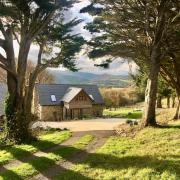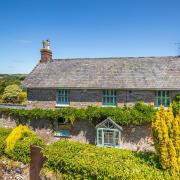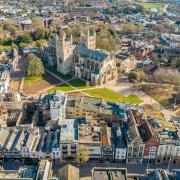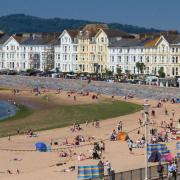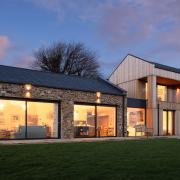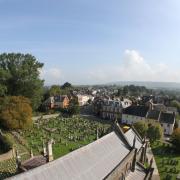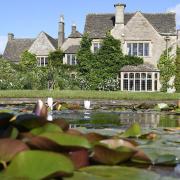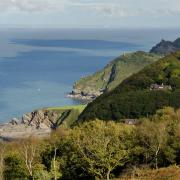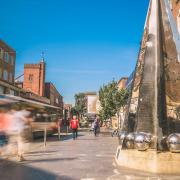As a reinvented and refurbished Royal Albert Memorial Museum gears up to re-opening in exeter, later this year, Julien Parsons considers its future in this age of austerity
Later this year the doors will open and an expectant public will be welcomed back into the Royal Albert Memorial Museum (RAMM). An ambitious refurbishment of this much-loved Exeter landmark has taken four years of closure to complete. Much has changed over those years; the new RAMM, conceived at a time of plenty, will be born into an age of austerity. How can it prosper in such a harsh climate? It may be that studying the past can offer up some solutions for the future.
As I write, contractors are busy installing display cases in readiness for the return of collections. We are entering the final phase of a master plan created by Allies and Morrison, a London-based architectural firm. The allure for them is working on a Victorian architectural gem: “An exquisite jewel box of a building; a Venetian casket,” enthused the architectural historian and TV presenter Dan Cruickshank. The development of the Exeter City Council-run museum has been possible because of �10.3 million from the Heritage Lottery Fund, backed up by �1 million in charitable donations and revenue funding from the government’s Renaissance programme for regional museums.
This investment will deliver a transformation for visitors. False walls and suspended ceilings have been stripped away to reveal stunning new vistas. Fundamental structural issues have been fixed, and a new extension provides an entrance from Bradninch Place and a state-of the-art gallery to show the best touring exhibitions, and RAMM’s internationally important collections are being spectacularly re-displayed.
During the closure we’ve experienced a banking crisis, global recession and a new government tackling a colossal national debt with a sharpened axe. And while culture secretary Jeremy Hunt tries to foster American-style philanthropy of the arts in the UK, others grimly shake their heads predicting dire consequences for our museums and galleries. The renowned philanthropist Dame Vivien Duffield, who has given millions of pounds to the arts, said that “Charity ought to be providing the icing on the cake, and government should be providing the cake”. If you look at RAMM’s history, it’s clear that private funds have helped out with baking the cake and icing it.
After Prince Albert’s death in 1861, debate in Exeter focused on creating a public memorial to him. Sir Stafford Northcote, one of the secretaries for the Great Exhibition, launched a public appeal for �15,000 to build the Albert Memorial Institution. It was to contain a museum, school of art, public reading room and library. By June 1864 enough had been collected to appoint John Hayward as architect. Working in the Gothic Revival style, Hayward produced an exuberant design complete with tracery and a rose window more at home in a medieval cathedral. The first phase, opened in 1868, was barely more than the fa�ade on Queen Street, but it was soon supplemented by a new wing opened the next year.
The museum lacked funds for decoration, furniture and even showcases, so to help out RAMM’s impressive cellars were leased to the wine merchants next door. It was only when the museum was transferred to Exeter City Council care in 1870 that financial stability was finally achieved: it’s been RAMM’s greatest supporter and principal funder ever since. Through the 1880s and ’90s more extensions came from private donations and bequests, such as that by Kent Kingdon who left �6,000.
In addition to assisting with the building, private donations established our collections; although there were some curious early gifts. What to do with 101 beach pebbles, an elephant’s tail or a cartload of curiously shaped oak? It remains a challenge to raise funds for special pieces when they arise. These days the Art Fund can help out. It’s a membership organisation aiding museums in acquiring works that would normally be beyond their means.
Art Fund contributions have helped secure many of RAMM’s treasures, like an outstanding collection of early Westcountry silver spoons, a Turner watercolour of Buckfastleigh Abbey and a group of drawings by John White Abbott. In just the last few years acquisitions have included a contemporary Egyptian tapestry, a Japanese lacquer vessel, a miniature by Richard Cosway, and a portrait of John Rolle Walter painted by Pompeo Batoni. The Batoni acquisition shows how combining sources can make all the difference: in this case the Art Fund, Heritage Lottery Fund, MLA/V&A Purchase Grant Fund and RAMM’s Friends helped raise �300,000. In reality this is how successful museums have come to exist, looking opportunistically to combine private and public funding. I think such arrangements will become the norm in the next few years.
Extracts from museum donation book, 1870
11 Jany Elephant’s Tail A704 1 Lieut White 50th Regt. Indian
1 Feb Specimens illustrative of the beach at Budleigh Salterton 101 spms. J. H. Carter Esq., The Cottage, Budleigh Salterton
7 March Cartload of curiously grown oak timber for ornamental seats Henry Maudsley Esq., Bystock, Exmouth. Cut up for firewood by order of the Committee.
If you feel you would like to take up the role of modern-day philanthropist, we would love to hear from you. You could perhaps sponsor an exhibition or let us host your corporate events.
Contact Ruth Randall, 01392 665955. RAMM’s Development Trust is a registered charity raising funds for the redevelopment. For more information contact newramm@exeter.gov.uk. More information on the Art Fund can be found at artfund.org



